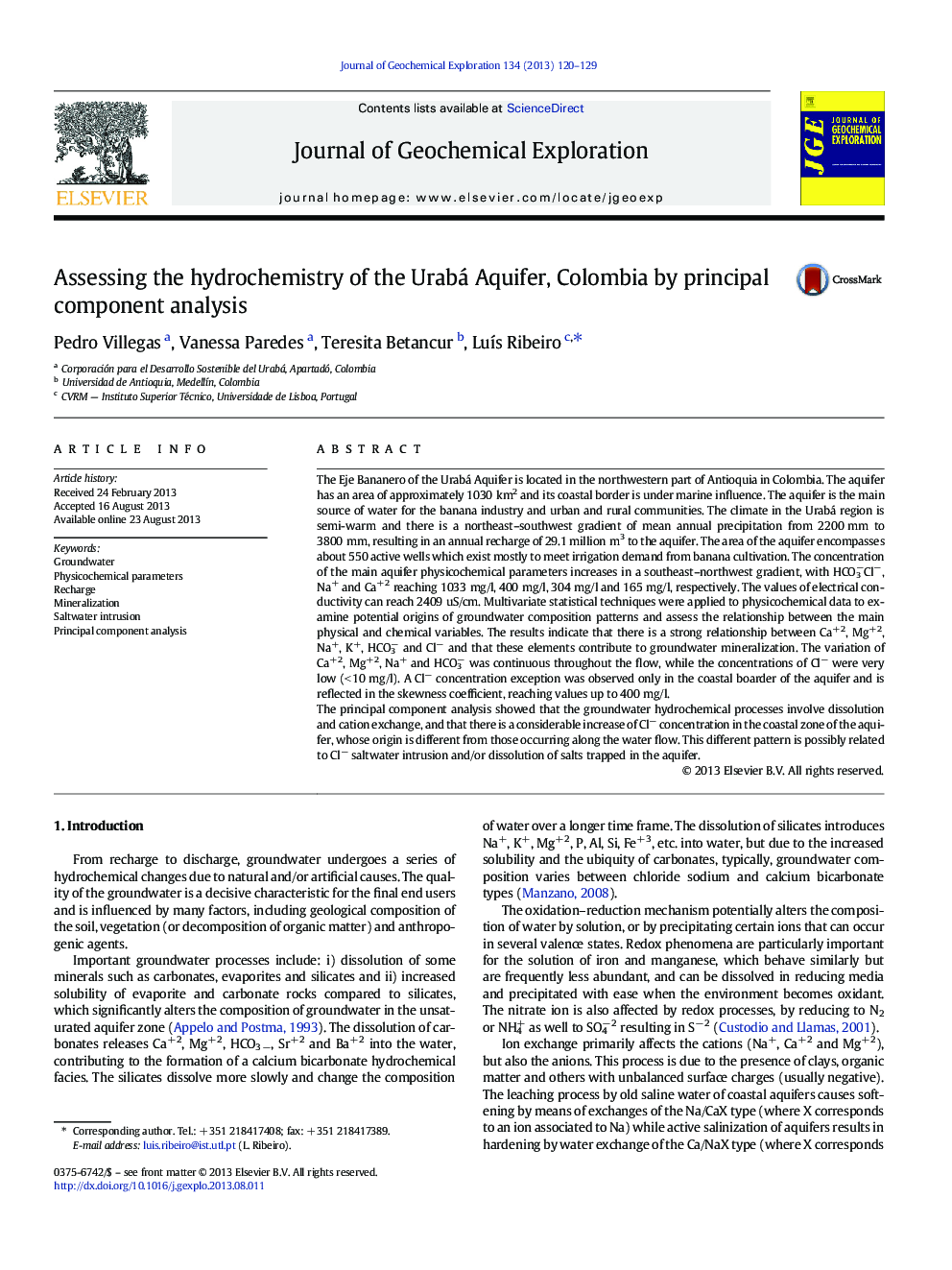| Article ID | Journal | Published Year | Pages | File Type |
|---|---|---|---|---|
| 4457522 | Journal of Geochemical Exploration | 2013 | 10 Pages |
•To identify the main groundwater hydro-chemical patterns•To reveal relationships between various parameters and the environment•To highlight the main hydro-geochemical processes
The Eje Bananero of the Urabá Aquifer is located in the northwestern part of Antioquia in Colombia. The aquifer has an area of approximately 1030 km2 and its coastal border is under marine influence. The aquifer is the main source of water for the banana industry and urban and rural communities. The climate in the Urabá region is semi-warm and there is a northeast–southwest gradient of mean annual precipitation from 2200 mm to 3800 mm, resulting in an annual recharge of 29.1 million m3 to the aquifer. The area of the aquifer encompasses about 550 active wells which exist mostly to meet irrigation demand from banana cultivation. The concentration of the main aquifer physicochemical parameters increases in a southeast–northwest gradient, with HCO3−Cl−, Na+ and Ca+ 2 reaching 1033 mg/l, 400 mg/l, 304 mg/l and 165 mg/l, respectively. The values of electrical conductivity can reach 2409 uS/cm. Multivariate statistical techniques were applied to physicochemical data to examine potential origins of groundwater composition patterns and assess the relationship between the main physical and chemical variables. The results indicate that there is a strong relationship between Ca+ 2, Mg+ 2, Na+, K+, HCO3− and Cl− and that these elements contribute to groundwater mineralization. The variation of Ca+ 2, Mg+ 2, Na+ and HCO3− was continuous throughout the flow, while the concentrations of Cl− were very low (< 10 mg/l). A Cl− concentration exception was observed only in the coastal boarder of the aquifer and is reflected in the skewness coefficient, reaching values up to 400 mg/l.The principal component analysis showed that the groundwater hydrochemical processes involve dissolution and cation exchange, and that there is a considerable increase of Cl− concentration in the coastal zone of the aquifer, whose origin is different from those occurring along the water flow. This different pattern is possibly related to Cl− saltwater intrusion and/or dissolution of salts trapped in the aquifer.
